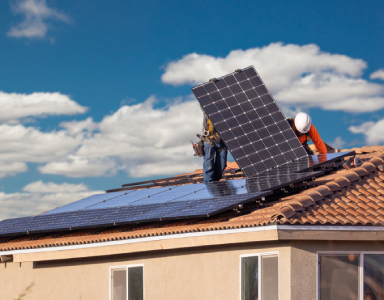
There has been explosive growth in the self-generation sector over recent years, to the extent that the annual installed capacity has increased by a factor of twenty-six in barely four years. Experts expect growth to slow this year, due to the significant tension in the labour market and the supply chain generated by this growth. Nevertheless, it will continue to rise significantly over the coming years.
According to José María González Moya, General Manager of APPA Renovables, there are some structural features and other more conjunctural factors involved in this trend. "The conjunctural factors include one that has been easing this year: the exorbitant growth of prices on the electricity markets in 2022, which led many residential customers to opt for self-generation as a form of protection against rises in electricity price", he explains.
Over the next few years, there are five key factors which will shape the future of self-generation in Spain: European targets, architectural integration, storage, diffuse sectors and the rise of energy communities.
European targets
Europe has made a commitment to renewable energies as a way of decarbonising its energy mix and reducing foreign energy dependence. This is nothing new, but it is important to highlight that these targets are being extended from Europe, and in Spain the goals are to increase renewable electricity to 74% by 2030 and a reduction in emissions of 55% by the same year.
Self-generation is an essential part of this strategy: In 2022 alone, it generated the equivalent of 1.8% of electricity demand and this figure is expected to rocket in 2023.
Architectural integration
The main technology used in self-generation is photovoltaic, a simple, modular and reliable technology which has a great capacity for integration into a variety of surfaces. Among the advances being made in this respect is the development of transparent panels, which could turn windows into electricity generation zones, or photovoltaic roof tiles. Pergolas, car parks, irrigation channels... are all elements in which photovoltaic installations could be used.
Storage
The global battery market is developing in a very similar way to photovoltaic technology so far. Over the last 14 years the costs of photovoltaic installations have fallen by 84%. This is a spectacular figure if we take into account the inflation of recent months.
Something similar is happening in the case of storage. According to some studies, since 1991 the price of batteries has fallen by around 98%. In a way similar to the renowned "Moore's Law", whenever storage capacity doubles, prices fall by an average of 19%. This is good news for self-generation, which provides the best results in combination with storage.
Electrification
Although electricity is of key importance to our society, its proportion of the energy mix is not as significant as we might imagine. Around 25% of energy is electricity, so most of our energy mix lies beyond the 74% targets set for electricity by 2030.
Transport and heating uses are the great battleground for decarbonisation, and self-generation will be key for their electrification. "The combination of self-generation and electric vehicles for transportation, and self-generation and heat pumps for heating, refrigeration and domestic hot water, must become a priority for our energy policies", explains the general manager of Appa Renovables. "It is crucial for us to take the next step: From generating our electricity for fuelling our vehicles to heating our homes with self-generated electricity."
Energy communities
The early call for a general election has paralysed many bills which were being prepared. One of them is on energy communities, work on which will undoubtedly resume after the elections of 23 July. In fact, Europe is already setting out the path for the future and opening the door which will enable individual self-generation to develop towards trade in electricity between neighbouring consumers.
This interaction between users, and the future development of energy communities, which goes far beyond self-generation itself, will be very interesting forms for the future development of current shared self-generation. The digitalisation of the grid will support this change of paradigm in which self-generation is already taking the lead.





